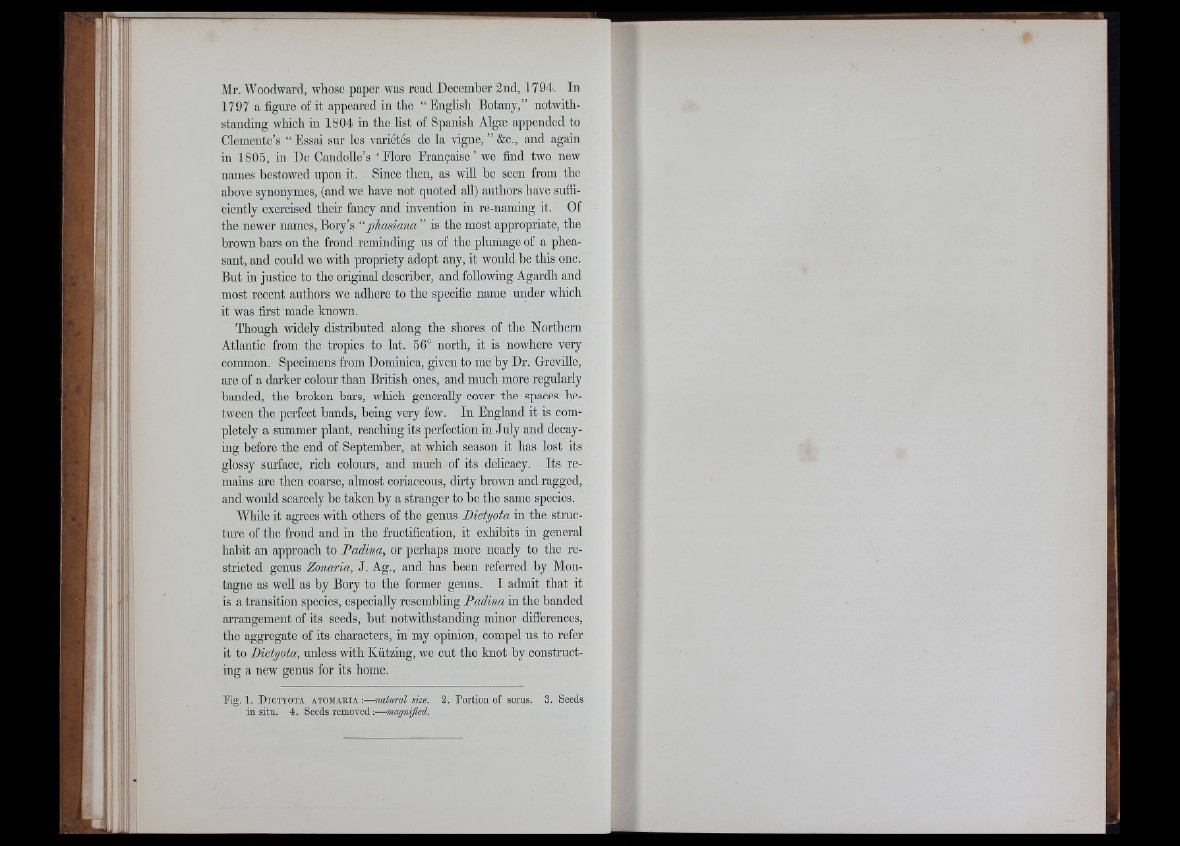
Mr. Woodward, whose paper was read December 2nd, 1794. In
1797 a figm-e of it appeared in the “ English Botany,” notwithstanding
which in 1804 in the list of Spanish Algæ appended to
Clemente’s “ Essai sur les variétés de la vigne, ” &c., and again
in 1805, in De Candolle’s ‘Flore Française’ we find two new
names bestowed upon it. Since then, as will be seen from the
above synonymes, (and we have not quoted all) authors have sufficiently
exercised their fancy and invention in re-naming it. Of
the newer names, Bory’s “pliasiana ” is the most appropriate, the
brown bars on the frond reminding us of the plumage of a pheasant,
and could we with propriety adopt any, it would be this one.
But in justice to the original describer, and following Agardh and
most recent authors we adliere to the specific name under which
it was first made known.
Though widely distributed along the shores of the Northern
Atlantic from the tropics to lat. 56° north, it is nowhere very
common. Specimens from Dominica, given to me by Dr. Greville,
are of a darker colour than British ones, and much more regularly
banded, the broken bars, which generally cover the spaces between
the perfect bands, being very few. In England it is completely
a summer plant, reaching its perfection in July and decaying
before the end of September, at which season it has lost its
glossy surface, rich colours, and much of its delicacy. Its remains
are then coarse, almost coriaceous, dirty brown and ragged,
and would scarcely be taken by a stranger to be the same species.
IVhile it agrees with others of the genus Dictyota in the structure
of the frond and in the fructification, it exhibits in general
habit an approach to Padina, or perhaps more nearly to the restricted
genus Zonaria, J. Ag., and has been referred by Montagne
as well as by Bory to the former genus. I admit that it
is a transition species, especially resembling Padina in the banded
arrangement of its seeds, but notwithstanding minor differences,
the aggregate of its characters, in my opinion, compel us to refer
it to Dictyota, unless with Kiitzing, we cut the knot by constructing
a new genus for its home.
Fig. 1. D iotyo ta a t om a r ia :— natural size. 2. Portion of sorus. 3. Seeds
in situ. 4. Seeds removed:—macjnified.